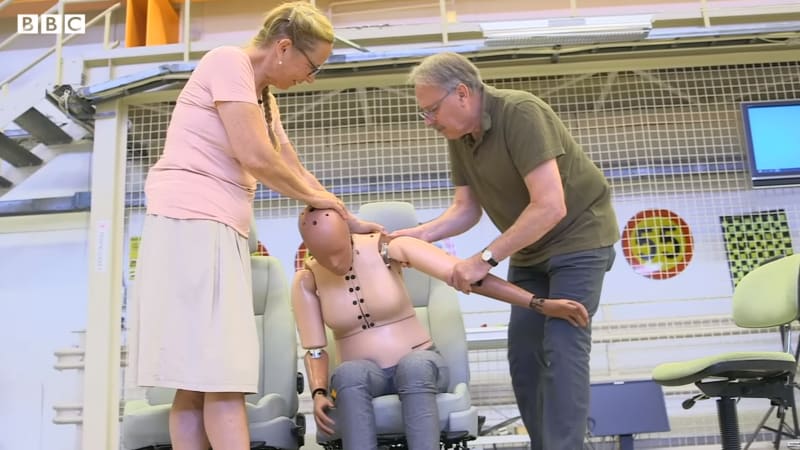The world finally has a representative female crash test dummy

In the early 1970s, the gods of crash test dummies at GM created the Hybrid I, designed to represent the average male in height, weight, and proportions. When engineers needed dummies to represent women, children, and infants, the gods of the dummies resized Hybrid I instead of creating the average forms of other human genders and ages. The first female-focused crash tester didn’t arrive until 2011 and its build represented just 5% of women, being 4′ 11″ and weighing 108 pounds — the rough dimensions of a 12-year-old girl. And it’s still in use today. BBC News reports that a research team in Sweden has finally created a dummy to correct this decades-long oversight.
This is a hugely important thing to do when NHTSA says women are 73% more likely than men to be seriously injured in a car crash. Last year, the Insurance Institute for Highway Safety studied 18 years of crash reports, after subtracting for differences in vehicle size, it found “women were still twice as likely to be moderately injured and a bit more likely to be seriously hurt,” and 2.5 times more likely to suffer moderate leg injuries.
The new tester is 5′ 3″ and weighs 137 pounds. The U.S. Centers for Disease Control say the average U.S. woman is 5′ 4″ and weighs 170.8 pounds. Word Data Info says the average European woman stands 5’5″ tall and weighs 155 pounds. The new test dummy’s chest and hips better represent the average woman’s physiology, its biomechanics better represent the average woman having less muscle mass and muscle strength than men, and correspondingly less joint stiffness than men.
Astrid Linder, engineer and director of traffic safety at the Swedish National Road and Transport Research Institute, led the research team behind the new dummy. She said the stiffness aspect is especially important because women are more at risk of whiplash in low-severity crashes than men. She told NPR, “We found that you could get quite different performances of the different seats depending on if it was the male or the female that were in these seats.”
On top of that, a properly proportioned dummy returns better data on airbag crashes with women sitting closer to the wheel, and how seat belts perform over different hip shapes with more flexible joints.
Creating the new crash test dummy is only the first step. It will take more study and new government regulations to get the dummy into use, which some U.S. Congress members are working on.



